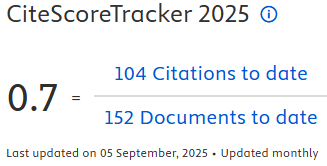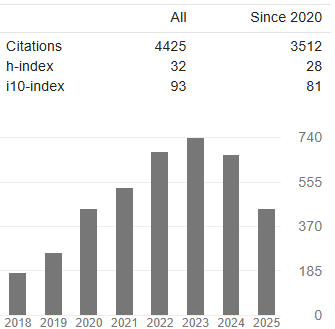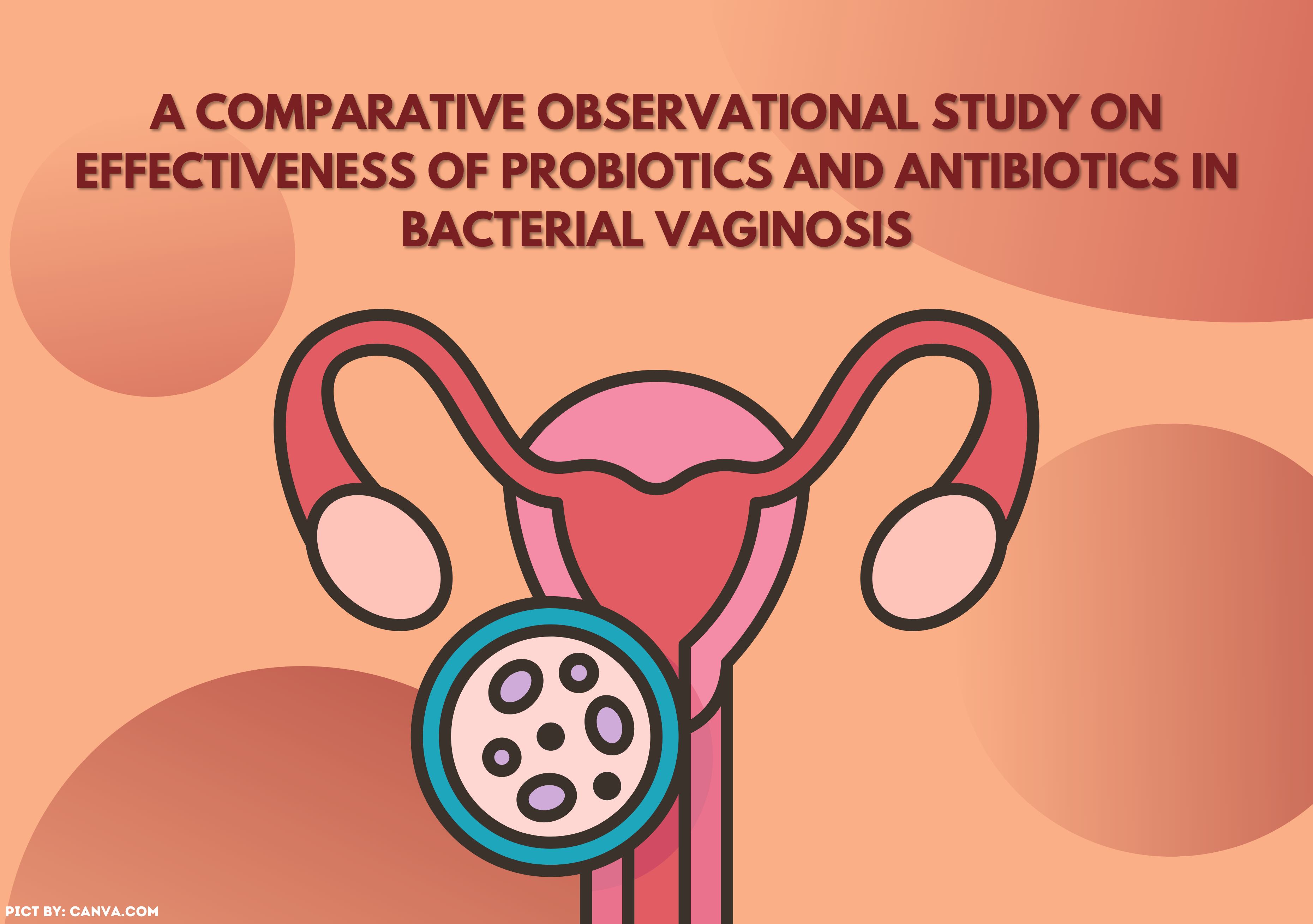BIOMONITORING OF SEVOFLURANE EXPOSURE IN ANESTHESIOLOGIST
Downloads
ABSTRACT
Sevoflurane is used by anesthetists for the induction and maintenance of general anesthesia. This causes the anesthetist to get daily exposures. This will be a potential hazard for exposed operating room personnel, especially anesthetists. The adverse health effects of sevoflurane as hepatotoxic, nephrotoxic and neurotoxic in the human body can be a risk for anaesthetists. Biological monitoring can be done by measuring the levels of sevoflurane and its metabolites or by looking at biomarkers for their effects on health effects. The aim of this study was to seek a literature review on the biomonitoring of sevoflurane exposure in anaesthetists. We searched the literature review using the PRISMA method in PubMed and Google scholar using the following keywords "occupational disease" "chronic effects" "anaesthetist" "sevoflurane exposure" "inorganic fluoride" "biomarkers" previously using the term MeSH and combined with Boolen "OR" and AND". We obtain 75 articles taken from the database, excluded 35 articles, and selected 5 articles. The results of the review articles showed that there were health effects, especially on liver and kidney function in chronic exposure. Biological monitoring can be undertaken by detecting sevoflurane and its metabolites in the urine during work and function of the liver and kidneys. The evidence for biological monitoring as surveillance in anaesthesiologists remain inconsistent due to limited studies. We recommend to measure sevoflurane in ambient air using a hierarchy of controls, such as elimination, replacement, engineering, administrative and personal protective equipment. We need to undertaken environmental and biological monitoring in order to acquire a safe and healthy work environment.
Keywords: sevoflurane exposure, occupational health, anesthesiologist
Accorsi, A. et al. (2005) ‘Urinary sevoflurane and hexafluoro- isopropanol as biomarkers of low- level occupational exposure to sevoflurane', International Archives of Occupational and Environmental Health, 78(5), pp. 369–378. doi: 10.1007/s00420-004- 0580-8.
Brioni, J. D. et al. (2017) ‘A clinical review of inhalation anesthesia with sevoflurane: from early research to emerging topics', Journal of
Anesthesia, 31(5), pp. 764–778. doi: 10.1007/s00540-017-2375-6.
Dalagkozi, P. et al. (2018) ‘The Effects of Exposure of Health Care Professionals to Volatile Anesthetic Gases', in. doi: 10.1007/978-3-319-70548-4_574.
Dehghani, F. et al. (2020) ‘Probabilistic health risk assessment of occupational exposure to isoflurane and sevoflurane in the operating room', Ecotoxicology and Environmental Safety, 207(May 2020), p. 111270. doi: 10.1016/j.ecoenv.2020.111270.
Dong, Y. et al. (2009) ‘The common inhalational anesthetic sevoflurane induces apoptosis and increases β-amyloid protein levels', Archives of Neurology. doi: 10.1001/archneurol.2009.48.
Edgington, T. L., Muco, E. and Maani, C. V. (2007) ‘Sevoflurane - StatPearls - NCBI Bookshelf', xPharm: The Comprehensive Pharmacology Reference, pp. 1–4.
Hemmings, H. C. and Egan, T. D. (2018) Pharmacology and physiology for anesthesia: Foundations and clinical application, Pharmacology and Physiology for Anesthesia: Foundations and Clinical Application. doi: 10.1016/C2014-0-04139-1.
Hemmings, H. C. and Egan, T. D. (2019) Pharmacology and Physiology for Anesthesia_ Foundations and Clinical Application-Elsevier (2018).pdf.
Herzog-Niescery, J. et al. (2015) ‘Occupational chronic sevoflurane exposure in the everyday reality of the anesthesia workplace', Anesthesia and Analgesia, 121(6), pp. 1519–1528. doi: 10.1213/ANE.0000000000001015.
Hoerauf, K. H. et al. (1996) ‘Occupational exposure to sevoflurane and nitrous oxide in operating room personnel', International Archives of Occupational and Environmental Health, 69(2), pp. 134–138. doi: 10.1007/s004200050127.
Hoerauf, K. H. et al. (1999) ‘Occupational exposure to sevoflurane during sedation of adult patients', International Archives of Occupational and Environmental Health, 72(3), pp. 174–177. doi: 10.1007/s004200050357.
Ä°nan, G. and Özköse Åžatirlar, Z. (2015) ‘Alzheimer disease and anesthesia', Turkish Journal of Medical Sciences. doi: 10.3906/sag-1407-40.
Kubota, Y. (1992) ‘Comparative Study of Sevoflurane with Other Inhalation Agents', (Table 3), pp. 118–124.
Kunze, N. et al. (2015) ‘Multi-capillary column-ion mobility spectrometry (MCC-IMS) as a new method for the quantification of occupational exposure to sevoflurane in anaesthesia workplaces: An observational feasibility study', Journal of Occupational Medicine and Toxicology. doi: 10.1186/s12995-015-0056-7.
Lucio, L. M. C. et al. (2018) ‘Occupational hazards, DNA damage, and oxidative stress on exposure to waste anesthetic gases', Brazilian Journal of Anesthesiology. doi: 10.1016/j.bjan.2017.05.001.
Mastrangelo, G. et al. (2013) ‘Exposure to anesthetic gases and Parkinson's disease: A case report', BMC Neurology, 13. doi: 10.1186/1471-2377-13-194.
Molina Aragonés, J. M. et al. (2016) ‘Occupational exposure to volatile anaesthetics: A systematic review', Occupational Medicine, 66(3), pp. 202–207. doi: 10.1093/occmed/kqv193.
Neghab, M. et al. (2020) ‘Toxic responses of the liver and kidneys following occupational exposure to anesthetic gases', EXCLI Journal, 19, pp. 418–429. doi: 10.17179/excli2019-1911.
Neisi, A. et al. (2019) ‘Investigation of health risk assessment sevoflurane on indoor air quality in the operation room in Ahvaz city, Iran', Toxin Reviews. doi: 10.1080/15569543.2018.1434796.
Scapellato, M. L. et al. (2014) ‘Biomonitoring occupational sevoflurane exposure at low levels by urinary sevoflurane and hexafluoroisopropanol', Toxicology Letters, 231(2), pp. 154–160. doi: 10.1016/j.toxlet.2014.10.018.
Türkan, H., Aydin, A. and Sayal, A. (2005) ‘Effect of volatile anesthetics on oxidative stress due to occupational exposure', World Journal of Surgery. doi: 10.1007/s00268-004-7658-z.
Volquind, D. et al. (2013) ‘Occupational Hazards and Diseases Related to the Practice of Anesthesiology', Revista Brasileira de Anestesiologia, 63(2), pp. 227–232. doi: 10.1016/S0034-7094(13)70221-6.
Zhimin ji, Wanjun Wu, Fan zhou, Junfang Hu, Qiuping Xu, Weibin Yang, Xueyong Peng, XInguo Wang, Cheng Zhang, L. L. (2020) ‘Effects of Sevoflurane Exposure on Apoptosis and Cell Cycle of Peripheral Blood Lymphocytes, and Immunologic Function', BMC Anesthesiology. Available at: https://doi.org/10.21203/rs.3.rs-139150/v1.
- The authors agree to transfer the transfer copyright of the article to The Indonesian Journal of Public Health effective if and when the paper is accepted for publication.
- Authors and other parties are bound to the Creative Commons Attribution-NonCommercial-ShareAlike 4.0 International License for the published articles, legal formal aspect of journal publication accessibility refers to Creative Commons Attribution-NonCommercial-ShareAlike 4.0 International License (CC BY-NC-SA), implies that:
- Attribution ” You must give appropriate credit, provide a link to the license, and indicate if changes were made. You may do so in any reasonable manner, but not in any way that suggests the licensor endorses you or your use.
- NonCommercial ” You may not use the material for commercial purposes.
- ShareAlike ” If you remix, transform, or build upon the material, you must distribute your contributions under the same license as the original.































